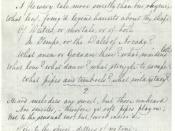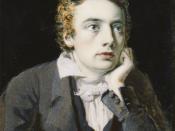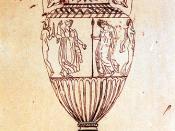ODE ON A GRECIAN URN
Keats was an important figure in early 19th century poetry and arguably wrote some of the most beautiful and moving poetry in the English language, despite dying at a very young age. Many of Keats' themes and concerns are quintessentially Romantic such as the beauty of nature and the transience of human life in time. Keats seems troubled by a quest for beauty and perfection and this is especially evident in his odes. These lyric poems were written between March and September 1819 and Keats died in 1821.
In Ode To A Nightingale, Keats turned to the song of a bird in his quest for perfection, in Ode On A Grecian Urn he has turned to art. Instead of identifying with the fluid expressiveness of music the speaker attempts to engage with the static immobility of sculpture. This is done by examining the pictures on the urn and by the speaker describing them and interpreting their meaning.
Finding a paradox in nearly all that he finds, it is as if Keats examines both sides of every coin using the urn as a base of perfection and the mortal desires of man and the passage of time on nature as the flip side.
The choice of an urn as the subject is in itself interesting, a container designed to keep things safe from decay. However, by keeping something safe from harm by enclosing it, you also prevent it from being released. This symbolic struggle is a theme repeated throughout the poem.
The urn's perfection is established in the opening lines being referred to first as a bride and then as a child, both of which imply a sexual undertone but by being unravished and fostered, the urn retains a God like purity, never tainted by the...



Clear Analysis
Good stanza-by-stanza analysis. It is very comprehensive & clear.
0 out of 0 people found this comment useful.